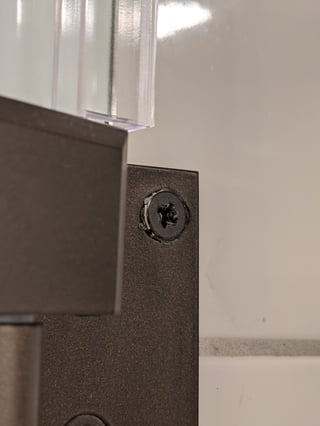I recently had shower glass & door installed - but the shower door hinges have their screws (ones that go into the tile wall) are screwed in at an angle, so they do not sit flush against the hinge.
All the screws are this way except the center one, I am wondering if this is normal?
I asked the guy who installed it, he said it is purposefully done that way so that it would be able to withstand the weight of the glass door.
Some details of the project:
- This is a torn down to the studs kind of project
- There are double studs behind the tile where the hinges are
- The door is a 90 degree door
Any of you know if this is normal?




